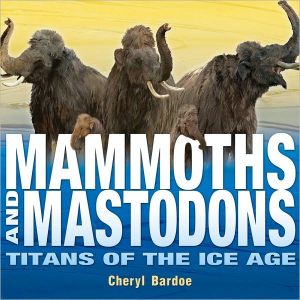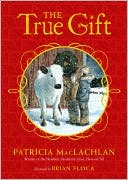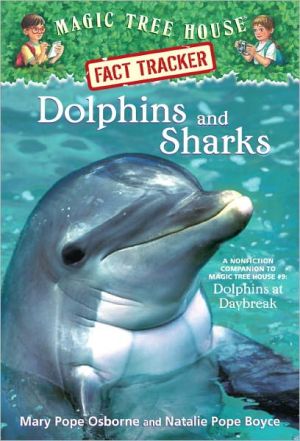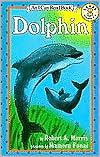Mammoths and Mastodons: Titans of the Ice Age
Mammoths and mastodons roamed the earth for more than a million years, and then suddenly went extinct. What was everyday life like for these colossal cousins of the modern elephant? What did they eat? How did they fit into their Ice Age landscape? Why did they disappear?\ These questions and more are answered in this fascinating book that presents the latest research, drawing on the recent discovery of a fully frozen baby mammoth—which has allowed scientists to learn more than they ever could...
Search in google:
Mammoths and mastodons roamed the earth for more than a million years, and then suddenly went extinct. What was everyday life like for these colossal cousins of the modern elephant? What did they eat? How did they fit into their Ice Age landscape? Why did they disappear?These questions and more are answered in this fascinating book that presents the latest research, drawing on the recent discovery of a fully frozen baby mammoth—which has allowed scientists to learn more than they ever could have known just from studying bones and fossils.Profusely illustrated, Mammoths and Mastodons features photographs of archaeological digs, scientists at work in the field and in labs, and archival relics. Specially commissioned artwork also brings the story of mammoths and mastodons to life. The book includes a bibliography, a glossary, and an index. Exhibition schedule Publication will coincide with the Field Museum exhibit Mammoths and Mastodons, which runs from March 5 through September 6 in Chicago and is then projected to tour up to 10 venues through 2014. March 5–September 6, 2010: The Field Museum, Chicago October 16, 2010–January 9, 2011: City TBA November 25, 2011–April 15, 2012: City TBA May 26–September 3, 2012: City TBA October 13, 2012–January 13, 2013: Museum of Science, Boston February 23–May 27, 2013: City TBA May 10–September, 2014: City TBAThe Washington Post - Abby McGanney NolanAlthough the animals are long extinct, Bardoe makes clear their relevance, not least to the survival of today's African and Asian elephants, and offers up plenty of intriguing sidebars and illustrations.
\ School Library JournalGr 5–7—Mammoths tend to get a lot of press, while their mastodon cousins accumulate footnotes, so it's nice to see mastodon getting second-banana billing in this attractive look at Ice Age favorites. Bardoe begins with the discovery of a marvelously preserved infant mammoth in Northern Siberia and goes on to discuss anatomy (comparing mastodon tusks and teeth, for example) and to postulate on probable Proboscidan behaviors based on fossil finds and extrapolation of modern elephant lifestyles. The readable text includes two fictional scenarios for fossils being found where they were (e.g., a young bull trapped in a steeper-than-expected water hole) and is nicely larded with interesting information boxes on such topics as "Treasures from the Permafrost." Excellent color photos and competent artwork lend visual interest, as does a Proboscidan "family tree" and a pair of maps (one of which, on Ice Age boundaries, may prove a tad confusing due to overlaps). Team this with Sandra Markle's dramatic Outside and Inside Woolly Mammoths (Walker, 2007) or Windsor Charlton's investigation of the Jarkov mammoth in Woolly Mammoth: Life, Death, and Rediscovery (Scholastic, 2001) for a grand view of an Ice Age icon. Eye-catching and informative.—Patricia Manning, formerly at Eastchester Public Library, NY\ \ \ \ \ Abby McGanney NolanAlthough the animals are long extinct, Bardoe makes clear their relevance, not least to the survival of today's African and Asian elephants, and offers up plenty of intriguing sidebars and illustrations.\ —The Washington Post\ \ \ Kirkus ReviewsBased on published research and interviews with working scientists, Bardoe presents a lively and engrossing case study in how paleontologists examine both ancient and modern clues for insights into the diets, physical development and behavior of extinct animals. Cousins to modern elephants, mammoths and mastodons once roamed large portions of the Earth, but for reasons that are not completely understood (climate change? predation by early humans? disease?) vanished relatively suddenly. Focusing particularly on tantalizing remnants like the 55 fossilized skeletons found near one sinkhole in South Dakota and "Lyuba," the well preserved "prehistoric popsicle" discovered in 2007 in Siberia, the author presents both facts and educated guesses-while leaving it clear that there is much still to be learned. Illustrated with bright color photos and painted reconstructions, this should be a big draw for readers who might struggle with the greater level of specific anatomical detail in Sandra Markle's Outside and Inside Woolly Mammoths (2007). (Nonfiction. 10-12)\ \








